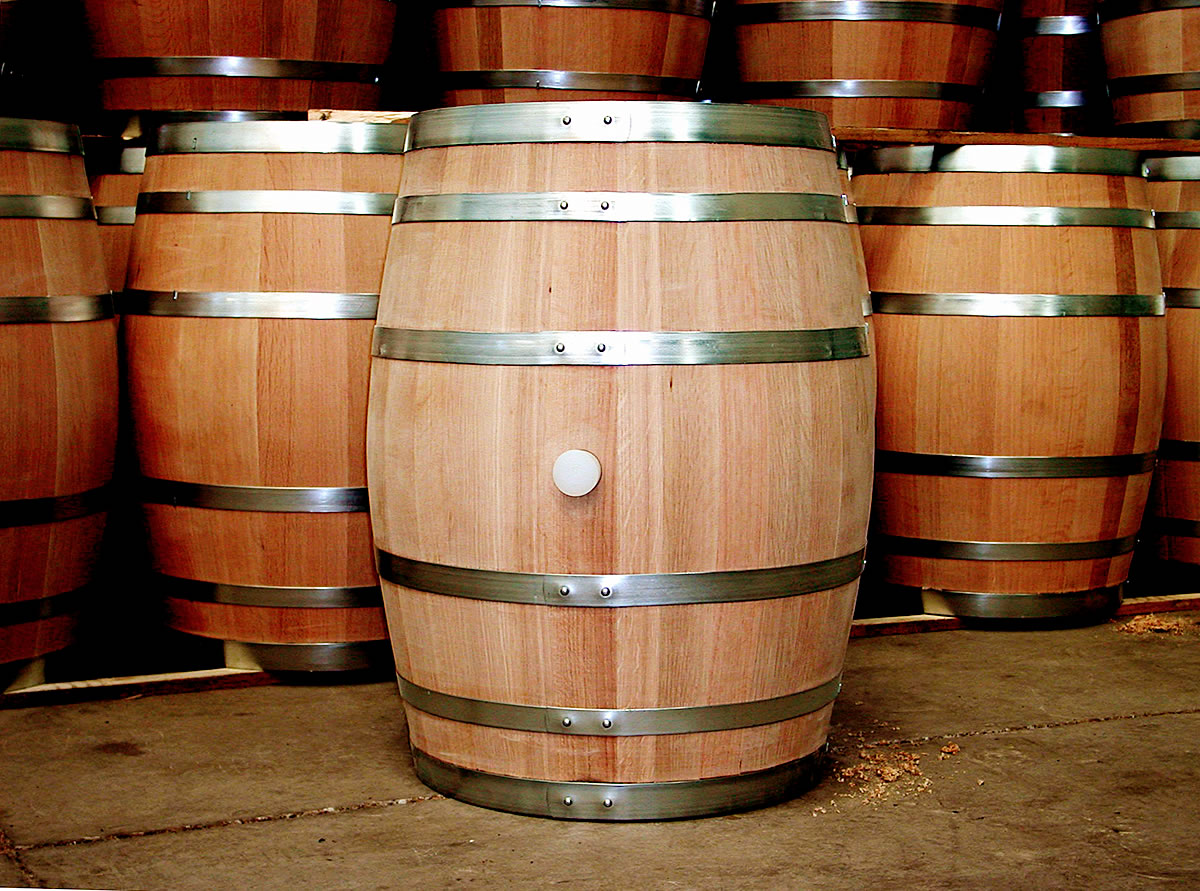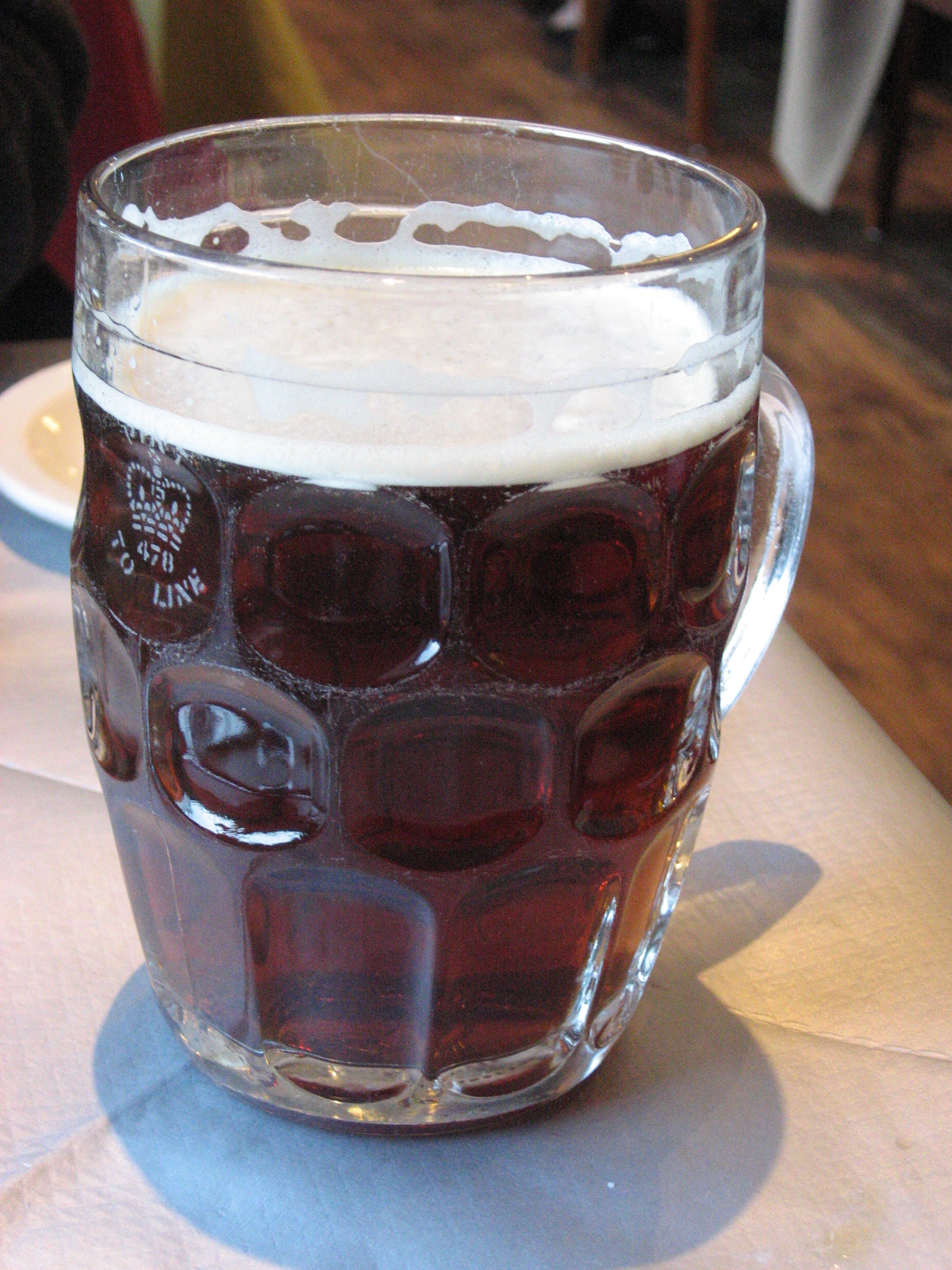|
English Brewery Cask Units
Capacities of brewery casks were formerly measured and standardised according to a specific system of English units, which was originally based on the ale gallon of exactly (or exactly US gallons). With the adoption of the imperial system in the United Kingdom and its colonies in 1824, these units were redefined in terms of the slightly smaller imperial gallon (of exactly ): the older units continued in use in the United States. Historically, the terms ''beer'' and ''ale'' referred to distinct brews. From the mid-15th century until 1803 in Britain, "ale" casks and "beer" casks differed in the number of gallons they contained. Units Tun The beer tun is equal to double the size of a butt: it is therefore exactly or approximately .This assumes the current definition of the imperial gallon as exactly 4.54609 litres. This unit is exactly larger than the wine tun. Butt (Imperial) The butt of beer is equal to half a tun or two hogsheads, and is therefore exactly or approximate ... [...More Info...] [...Related Items...] OR: [Wikipedia] [Google] [Baidu] [Amazon] |
Brewery
A brewery or brewing company is a business that makes and sells beer. The place at which beer is commercially made is either called a brewery or a beerhouse, where distinct sets of brewing equipment are called plant. The commercial brewing of beer has taken place since at least 2500 BC; in ancient Mesopotamia, brewers derived social sanction and divine protection from the goddess Ninkasi. Brewing was initially a cottage industry, with production taking place at home; by the ninth century, monasteries and farms would produce beer on a larger scale, selling the excess; and by the eleventh and twelfth centuries larger, dedicated breweries with eight to ten workers were being built. The diversity of size in breweries is matched by the diversity of processes, degrees of automation, and kinds of beer produced in breweries. A brewery is typically divided into distinct sections, with each section reserved for one part of the brewing process. History Beer may have been known in N ... [...More Info...] [...Related Items...] OR: [Wikipedia] [Google] [Baidu] [Amazon] |
Barrel
A barrel or cask is a hollow cylindrical container with a bulging center, longer than it is wide. They are traditionally made of wooden stave (wood), staves and bound by wooden or metal hoops. The word vat is often used for large containers for liquids, usually alcoholic beverages; a small barrel or cask is known as a keg. Barrels have a variety of uses, including storage of liquids such as water, oil, and alcohol. They are also employed to hold maturing beverages such as wine, Cognac (brandy), cognac, Armagnac (drink), armagnac, sherry, port wine, port, whiskey, beer, arrack, and sake. Other commodities once stored in wooden casks include gunpowder, Salt-cured meat, meat, fish, paint, honey, nails, and tallow. Modern wooden barrels for wine-making are made of English oak (''Quercus robur''), white Oak (wine), oak (''Quercus petraea''), American white oak (''Quercus alba''), more exotic is mizunara oak (''Quercus crispula''), and recently Oregon oak (''Quercus garryana'') ... [...More Info...] [...Related Items...] OR: [Wikipedia] [Google] [Baidu] [Amazon] |
Units Of Measurement
A unit of measurement, or unit of measure, is a definite magnitude (mathematics), magnitude of a quantity, defined and adopted by convention or by law, that is used as a standard for measurement of the same kind of quantity. Any other quantity of that kind can be expressed as a multiple of the unit of measurement. For example, a length is a physical quantity. The metre (symbol m) is a unit of length that represents a definite predetermined length. For instance, when referencing "10 metres" (or 10 m), what is actually meant is 10 times the definite predetermined length called "metre". The definition, agreement, and practical use of units of measurement have played a crucial role in human endeavour from early ages up to the present. A multitude of System of measurement, systems of units used to be very common. Now there is a global standard, the International System of Units (SI), the modern form of the metric system. In trade, weights and measures are often a su ... [...More Info...] [...Related Items...] OR: [Wikipedia] [Google] [Baidu] [Amazon] |
List Of Unusual Units Of Measurement
An unusual unit of measurement is a unit of measurement that does not form part of a coherent system of measurement, especially because its exact quantity may not be well known or because it may be an inconvenient multiple or fraction of a base unit. Many of the unusual units of measurements listed here are colloquial measurements, units devised to compare a measurement to common and familiar objects. Length Horizontal pitch Horizontal pitch (HP) is a unit of length defined by the Eurocard printed circuit board standard used to measure the horizontal width of rack-mounted electronic equipment, similar to the rack unit (U) used to measure vertical heights of rack-mounted equipment. One HP is 0.2 inches (″) or wide. Hammer unit Valve's Source game engine uses the ''Hammer unit'' as its base unit of length. This unit refers to Source's official map creation software, Hammer. The exact definition varies from game to game, but a Hammer unit is usually defined as a sixteen ... [...More Info...] [...Related Items...] OR: [Wikipedia] [Google] [Baidu] [Amazon] |
Homebrewing
Homebrewing is the brewing of beer or other alcoholic beverages on a small scale for personal, non-commercial purposes. Supplies, such as kits and fermentation tanks, can be purchased locally at specialty stores or online. Beer was brewed domestically for thousands of years before its commercial production although its legality has varied according to local regulation. Homebrewing is closely related to the hobby of ''home distillation'', the production of alcoholic spirits for personal consumption, but home distillation is generally more tightly regulated. History Beer has been brewed domestically throughout its 7,000-year history, beginning in the Neolithic period in Mesopotamia (modern Iraq), Egypt and China. It seems to have first developed as thick beers; during this time meads, fruit wines and rice wines were also developed. Women brewers dominated alcohol production on every occupied continent until commercialization and industrialization of brewing occurred. The ... [...More Info...] [...Related Items...] OR: [Wikipedia] [Google] [Baidu] [Amazon] |
Cask Ale
Real ale is the name coined by the Campaign for Real Ale (CAMRA) for ale that is "brewed from traditional ingredients, matured by secondary fermentation in the container from which it is dispensed, and served without the use of extraneous carbon dioxide". Cask and bottle-conditioned beers Cask and bottle-conditioned beers are referred to as real ale by CAMRA, as both fit its description of beers served from a container in which they have undergone secondary fermentation. Distinction from filtered beer The fundamental distinction between real and other ales is that real ale is unfiltered and unpasteurized, leaving its yeast alive and slowly fermentating in bottle or keg. This secondary fermentation continues until the ale is served, allowing it to retain its natural carbonation. In contrast, natural carbonation is removed from standard beer and ale during filtering, requiring them to be artificially re-carbonated (and often very 'gassy'). Real ales are served "bottl ... [...More Info...] [...Related Items...] OR: [Wikipedia] [Google] [Baidu] [Amazon] |
Middle Dutch
Middle Dutch is a collective name for a number of closely related West Germanic dialects whose ancestor was Old Dutch. It was spoken and written between 1150 and 1500. Until the advent of Modern Dutch after 1500 or , there was no overarching standard language, but all dialects were mutually intelligible. During that period, a rich Medieval Dutch literature developed, which had not yet existed during Old Dutch. The various literary works of the time are often very readable for speakers of Modern Dutch since Dutch is a rather conservative language. Phonology Differences with Old Dutch Several phonological changes occurred leading up to the Middle Dutch period. * Earlier Old Dutch , , merge into already in Old Dutch. * Voiceless fricatives become voiced syllable-initially: > , > (merging with from Proto-Germanic ), > . (10th or 11th century) * > * > or . The outcome is dialect-specific, with found in more western dialects and further east. This results in later pairs ... [...More Info...] [...Related Items...] OR: [Wikipedia] [Google] [Baidu] [Amazon] |
Campaign For Real Ale
The Campaign for Real Ale (CAMRA) is an independent voluntary consumer organisation headquartered in St Albans, which promotes real ale, cider and perry and traditional British pubs and clubs. History The organisation was founded on 16 March 1971 in Kruger's Bar, Dunquin, County Kerry, Ireland, by Michael Hardman, Graham Lees, Jim Makin, and Bill Mellor, who were opposed to the growing mass production of beer and the homogenisation of the British brewing industry. The original name was the Campaign for the Revitalisation of Ale. Following the formation of the Campaign, the first annual general meeting took place in 1972, at the Rose Inn in Coton Road, Nuneaton. Early membership consisted of the four founders and their friends. Interest in CAMRA and its objectives spread rapidly, with 5,000 members signed up by 1973. Other early influential members included Christopher Hutt, author of ''Death of the English Pub'', who succeeded Hardman as chairman, Frank Baillie, autho ... [...More Info...] [...Related Items...] OR: [Wikipedia] [Google] [Baidu] [Amazon] |
United Kingdom
The United Kingdom of Great Britain and Northern Ireland, commonly known as the United Kingdom (UK) or Britain, is a country in Northwestern Europe, off the coast of European mainland, the continental mainland. It comprises England, Scotland, Wales and Northern Ireland. The UK includes the island of Great Britain, the north-eastern part of the island of Ireland, and most of List of islands of the United Kingdom, the smaller islands within the British Isles, covering . Northern Ireland shares Republic of Ireland–United Kingdom border, a land border with the Republic of Ireland; otherwise, the UK is surrounded by the Atlantic Ocean, the North Sea, the English Channel, the Celtic Sea and the Irish Sea. It maintains sovereignty over the British Overseas Territories, which are located across various oceans and seas globally. The UK had an estimated population of over 68.2 million people in 2023. The capital and largest city of both England and the UK is London. The cities o ... [...More Info...] [...Related Items...] OR: [Wikipedia] [Google] [Baidu] [Amazon] |
English Units
English units were the units of measurement used in England up to 1826 (when they were replaced by Imperial units), which evolved as a combination of the Anglo-Saxons, Anglo-Saxon and Ancient Roman units of measurement, Roman systems of units. Various standards have applied to English units at different times, in different places, and for different applications. Use of the term "English units" can be ambiguous, as, in addition to the meaning used in this article, it is sometimes used to refer to the units of the descendant Imperial system as well to those of the descendant system of United States customary units. The two main sets of English units were the Winchester measure, Winchester Units, used from 1495 to 1587, as affirmed by Henry VII of England, King Henry VII, and the Exchequer Standards, in use from 1588 to 1825, as defined by Queen Elizabeth I. In England (and the British Empire), English units were replaced by Imperial units in 1824 (effective as of 1 January 1826) ... [...More Info...] [...Related Items...] OR: [Wikipedia] [Google] [Baidu] [Amazon] |
Hogshead
A hogshead (abbreviated "hhd", plural "hhds") is a large Barrel (storage), cask of liquid (or, less often, of a food commercial Product (business), product) for manufacturing and sale. It refers to a specified volume, measured in either Imperial unit, imperial or United States customary units, US customary measures, primarily applied to alcoholic beverages, such as wine, ale, or cider. Etymology English philology, philologist Walter William Skeat (1835–1912) noted the origin is to be found in the name for a cask or liquid measure appearing in various forms in Germanic languages, in Dutch ''oxhooft'' (modern ''okshoofd''), Danish ''oxehoved'', Old Swedish ''oxhuvud'', etc. The ''Encyclopædia Britannica'' of 1911 conjectured that the word should therefore be "oxhead", "hogshead" being a mere corruption. Varieties and standardisation A tobacco hogshead was used in British and American colonial times to transport and store tobacco. It was a very large wooden barrel. A standard ... [...More Info...] [...Related Items...] OR: [Wikipedia] [Google] [Baidu] [Amazon] |
Puncheon (unit)
The puncheon was a British unit for beer, wines and spirits. It was also an American unit of capacity for wine. Definition Historically, the puncheon has been defined somewhere between . US unit of capacity for wine The US puncheon for wine is defined as . Conversion *1 puncheon = 70-120 gallons *1 puncheon = 0.318-0.546 m3 or 318 to 546 litres. US unit of capacity for wine *1 puncheon = 4/3 Hogshead *1 puncheon = 84 gallons *1 puncheon = 0.317974589856 m3 or about 318 litres. See also *English wine cask units Capacities of wine casks were formerly measured and standardised according to a specific system of English units. The various units were historically defined in terms of the wine gallon so varied according to the definition of the gallon until t ... References {{Reflist Units of volume Customary units of measurement Wine terminology ... [...More Info...] [...Related Items...] OR: [Wikipedia] [Google] [Baidu] [Amazon] |






